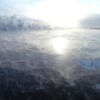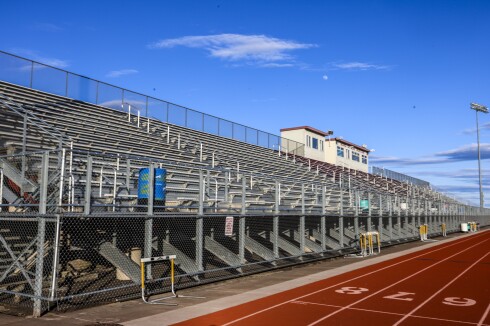The Arctic air over the Great Lakes last week did cause a surge in ice concentration for most of the Great Lakes. Here’s a look at how the percentage of ice cover now compares to historical normals.
Before we get into the exact numbers of the amount of ice cover, we should remind ourselves the Great Lakes water temperatures went into this recent cold snap with much warmer-than-normal conditions. We probably won’t see ice concentrations always rising in colder air. When winds become strong, each Great Lake will be mixed up and warmer water from below can come to the surface, reducing ice cover.
ADVERTISEMENT
In fact, we were seeing that situation Monday. Over the previous two days, the official ice concentration on the Great Lakes actually decreased from short-term peak ice late last week. This is just due to the strong winds pushing the ice out into open water and pushing it down into the lake water.

The ice concentration graphs do show an overall rapid increase in ice. A few of the Great Lakes are now at normal ice coverage or even above-normal ice coverage.
Lake Superior’s ice cover graph doesn’t show any remarkable ice growth last week. The amount of ice cover went up about 8% to 11% coverage Jan. 22.
Lake Michigan’s ice coverage has increased to about the long-term average for this time of year, with a short-term peak of 21% ice cover Jan. 22.
Lake Huron was smothered in the Arctic air. Also, its more shallow, larger surface area helped it cool off faster. Ice cover shot up from 10% to 30% last week. The fall-off in ice cover the past few days is probably due to strong winds stirring up the lake and breaking up the ice. The general ice cover direction is toward average ice cover in the next few weeks.
Lake Erie dramatically cooled off last week and ice cover skyrocketed. On Saturday, Jan. 25, the ice cover was up to 86% of the lake frozen over.
Lake Ontario’s ice growth last week is putting the lake’s ice at right around the normal curve.
ADVERTISEMENT
The next few weeks look quite a bit milder than last week, but still near normal temperatures. The Great Lakes ice cover will continue to grow, but probably at a much slower pace. It will take a long-lasting deep cold spell in early February for above-normal ice cover to occur on the Great Lakes.
One of the reasons for the Great Lakes having a tough time building ice over the next month is the warmer-than-normal water we had going into this recent cold spell.
©2025 Advance Local Media LLC. Visit mlive.com. Distributed by Tribune Content Agency, LLC.











